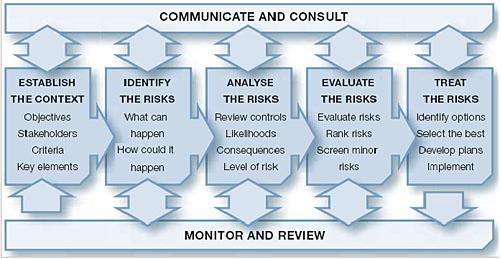Local and regional governments will play a key role in efforts directed at the practical planning and implementation of climate change adaptation.
 |
| Adaptive Resilience Framework |
1. Purpose focused policies
The focus should be on developing adaptive resilience through achievement of agreed objectives. (Note 2)
A resilience which goes beyond coping, to include continual adaptation and redesign in pursuit of core purpose.
2. Adaptive governance systems.
We should place emphasis on innovation and environmental scanning for future change, and structure organisations for capacity and change rather than assume a stable, fixed state.
Consistent, coherent and well researched risk information should be integrated into corporate and operational processes.
3. Risk based interventions.
Corporate risk assessment criteria should act as a strategic framework for priority setting and decision making activities, including the consideration of opportunities to build adaptive capacity, to advance learning, and to develop new approaches and programs.
Notes
1. “Rio+20 Policy Brief #3: Transforming governance and institutions for a planet under pressure” March 2012 p. 7.
2. Resilience can be usefully characterized by a combination of the following:
• Culture of shared purpose and values
• Predictable financial resources
• Strong internal and external networks
• Intellectual, human and physical assets
• Leadership, management and governance
• Adaptive capacity featuring innovation and experimentation
• Situation awareness of environment and performance
• Management of key vulnerabilities by planning for disruption
(Ref “Making adaptive resilience real” Mark Robinson, 2010 p. 27.)







